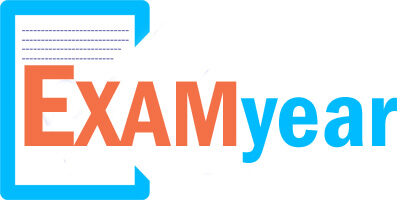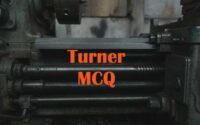ITI Mason Questions and Answers
ITI Mason Questions and Answers – Candidates are advised to check with the latest ITI Mason Tradesman Masonry Exam pattern. ITI Mason, Previous Papers helps the applicants during the preparation. Click on the links given below to go to the particular ITI Mason previous year question paper pdf.

However, before starting your preparation, we advise to check the complete ITI Mason exam syllabus for Tradesman Masonry posts. ITI Mason Tradesman Masonry previous year question paper direct download links. ITI Mason paper below is only for reference. Interested candidates can download the ITI Mason Tradesman Masonry Model Papers & ITI Mason Tradesman Masonry Sample Papers for free just within a few seconds.
ITI Mason Syllabus
| Tools & Equipment | Carpentry Tools & Joints |
| Carpentry Work | Arch Centering, Bricks |
| Brick Masonry Work | Cement, Sand & Lime |
| Pointing Work, Brick Masonry Work | Foundations |
| Forming Door & Window Openings | Arches |
| Roof Construction | Lintels, Hollow Blocks |
| Construction of Lintels | External & Internal Finishes |
| Construction of Pillars | Cavity Walls |
| Construction of Cavity Walls | RCC Work-Construction Details |
| Setting out a Building | Plastering, Moulding |
| Stairs | Architectural Terms, Mixing of Concrete |
| Circular Walls/Pillars | Floors |
| Drainage System, Roofs | Setting out a Drainage Line |
| House Drainage System | Hollow Block Masonry |
| Septic Tank | Fixing of Washbasin, WC, Sink, etc. |
| Stone Masonry | Construction of Compound Wall |
| RCC Work, Reinforced Brickwork | Construction of Stone wall |
| Ashlar Masonry | Flooring, Roof Finishing |
| Brick Masonry/Stone Masonry Work | Laying out a Stair |
| Lifting appliances, Moulding of Stones | Moulding Work |
| Rubble Masonry Work | Glazed Tiles, Construction & Expansion Joints |
| Marble Floors |
ITI Mason Model Question Papers
1. Imaginary vertical line joining the arrises is called :
(A) Lap
(B) Perpends
(C) Bed
(D) Racking
2. Colour of Roman cement is :
(A) Ash
(B) Grey
(C) Brown
(D) Black
3. Cupola furnace is used to produce :
(A) Pig iron
(B) Cast Iron
(C) Steel
(D) Wrought Iron
4. Uniform seasoning of timber is done by : –
(A) Hot drying
(B) Humidity drying
(C) Drying
(D) Moist drying
5. Age of good trees for felling varies from :
(A) 20 to 35 years
(B) 35 to 50 years
(C) 60 to 75 years
(D) 50 to 100 years
6. The timber defect caused by the crushing of wood fibers resulting in the breakage of continuity of fibers is called :
(A) Rind galls
(B) Knota
(C) Twisted fibers
(D) Upsets
7. The cracks which partly or completely separate the fibers of wood is :
(A) Knots
(B) Shakes
(C) Druxiness
(D) Foxiness
8. Which of the following is commonly used for the preservation of timber?
(A) Oil paints
(B) Chemical salts
(C) Coal tar
(D) All of the above
9. The common base for applying paint on wood is :
(A) Zinc oxide
(B) Red lead
(C) White lead
(D) Iron oxide
10. Commonly used cement in current paint is:
(A) Portland cement
(B) Grey cement
(C) Alumina cement
(D) White cement
11. Diameter of drilled piles should not exceed:
(A) 500 mm
(B) 650 mm
(C) 600 mm
(D) 700 mm
12. In very deep water the foundation for a bridge used is:
(A) Pier foundation
(B) Raft foundation
(C) Caisson foundation
(D) Pile foundation
13. Which of the following is used to make sheet piles?
(A) Concrete
(B) Steel
(C) Wood
(D) All of the above
14. The external corner or angles of walls are called:
(A) Quions
(B) Closer
(C) Spalls
(D) Squint closer
15. In an egg shaped sewer the maximum discharge occurs when the depth of flow is:
(A) 0.50 m
(B) 0.75m
(C) 0.60 m
(D) 0.95 m
16. The biological decomposition of organic matter in sewage is called:
(A) Digestion
(B) Dilution
(C) Decomposition
(D) None of the above
17. The system which is most common in India:
(A) Dead and system
(B) Grid iron system
(C) Ring system
(D) Radial system
18. The essence of the construction industry is:
(A) Man
(B) Money
(C) Materials
(D) Management
19. A first class brick has a crushing strength of:
(A) 75 kg/cm2
(B) 85 kg/cm2
(C) 105 kg/cm2
(D) 125 kg/cm2
20. The weight of common brick is:
(A) 2000 kg/m3
(B) 1600 to 1920 kg/m3
(C) 1400 to 1500 kg/m3
(D) 1200 to 1500 kg/m3
21. Bacteria die if temperature is more than:
(A) 50°C
(B) 40°C
(C) 30°C
(D) 27°C
22. Copper sulphate is used in treatment of water for controlling :
(A) Algae
(B) Silt
(C) Bacteria
(D) Mineral matter
23. The constituent which provides body to the paint and on which depends to a great extent the nature of the paint is called:
(A) Vehicle
(B) Base
(C) Solvent
(D) Colouring pigments
24. It is slapping or stepped masonry projection from a wall to provide lateral support to the wall:
(A) Pilaster
(B) Column
(C) Buttress
(D) All of the above
25. The horizontal course provided at suitable intervals between the plinth and cornice is called:
(A) Lacing course
(B) Damp proof course
(C) String course
(D) Levelling course
26. In brick masonry the straight edge is used:
(A) To mountain the level of the courses
(B) To check the alignment of work
(C) To check the horizontality of the work
(D) All of the above
27. Every header is centrally supported over the stretcher below it in:
(A) English bond
(B) Flemish bond
(C) Stretcher bond
(D) Both (A) and (B)
28. Headers and stretchers are arranged alternatively in every course in:
(A) English bond
(B) Stretcher bond
(C) Raking bond
(D) None of the above
29. A brick moulded with a rounded angle is termed as:
(A) Cow nose
(B) Splayed brick
(C) Bull nose
(D) Rounded brick
30. In is an apartment having rooms on two adjoining floors connected by an internal staircase
(A) Sky scrapers
(B) Dormitories
(C) Duplex type apartment
(D) None of these
31. Which type of building is coming under the group B?
(A) Residential
(B) Assembly
(C) Educational
(D) Commercial
32. A tenement means:
(A) Type of foundation
(B) TYPE of truss
(C) A family unit
(D) None of these
33. The commonly adopted nominal size of traditional brick is approximately:
(A) 23cm x 11.4cm x 7.6cm
(B) 19cm x 9cm x 9cm
(C) 20cm x 10cm x 10cm
(D) 21cm x 11.4cm x 7.6cm
34. The amount of lap across the thickness of wall should be minimum :
(A) ½ brick
(B) ¼ brick
(C) ¾ brick
(D) 5 cm
35. Which permits the highest form of residence?
(A) Row houses
(B) Sky scrapers
(C) Semi detached houses
(D) Detached houses
36. The term used to indicate the architectural effect produced by elevation in relation to width height, position of doors and windows, materials employed in construction of exterior wall
(A) Elegance
(B) Flexibility
(C) Grouping
(D) None of these
37. The minimum floor area required for water closet as per NBC is:
(A) 1.0 m2
(B) 1.2 m2
(C) 1.1 m2
(D) 1.5 m2
38. The required minimum width of kitchen as per NBC is
(A) 1.50 m
(B) 1.80 m
(C) 1.75 m
(D) 2.10 m
39. The setting of plan of the building on its site with reference to the directions is known as
(A) Set outing
(B) Planning
(C) Drawing
(D) Orientation
40. Which pile protects the berthing ships from damage?
(A) Cluster pile
(B) Bearing pile
(C) Fender pile
(D) Friction pile
41. It is a local law framed by a subordinate authority:
(A) Bye-law
(B) Suggestion
(C) Order
(D) Arbitration
42. For measurement of area of plastering work no deduction shall be made for the opening upto:
(A) 1.0 m2
(B) 3.0 m2
(C) 0.5 m2
(D) 1.5 m2
43. The exposed vertical surface perpendicular to the door frame is known as:
(A) Jamb
(B) Reveal
(C) Corbel
(D) Mullion
44. A curtain wall carries:
(A) Wind load
(B) Roof load
(C) Self load
(D) No load
45. An isolated load bearing masonry member is known as:
(A) Pillar
(B) Ramp
(C) Buttress
(D) Wall
46. The window provided on the sloping roof of a building is:
(A) Dormer window
(B) Bay Window
(C) Sky light
(D) Clerestory window
47. In public buildings the maximum riser is limited to:
(A) 10 cm
(B) 15 cm
(C) 18 cm
(D) 20 cm
48. The number of steps in a flight should not be greater than:
(A) 10 nos
(B) 12 nos
(C) 15 nos
(D) 14 nos
49. The projection of head or sill of a door or window frame are:
(A) Horns
(B) Stops
(C) Hold fast
(D) Style
50. The perpendicular distance between intrados and extrados of an arch is called:
(A) Pitch of an arch
(B) Depth of an arch
(C) Thickness of an arch
(D) Width of an arch
51. The triangular upper part of a wall formed an the end of pitched roof is:
(A) Gable
(B) Truss
(C) Barge board
(D) None of these
52. White cement should have least. percentage of:
(A) Aluminum oxide
(B) iron oxide
(C) Silica
(D) Magnesium oxide
53. The placing of new foundation below an existing foundation for strengthening the existing foundation is known as:
(A) Under pinning
(B) Sharing
(C) Scaffolding
(D) None of these
54. Cavity walls are provided:
(A) To prevent dampness
(B) For heat insulation
(C) Sound insulation
(D) All of the above
55. The vertical side member of shutter frame is known as:
(A) Style
(B) Reveal
(C) Mullion
(D) Post
56. The minimum width of septic took is:
(A) 60 cm
(B) 75 cm
(C) 90 cm
(D) 120 cm
57. The walls constructed on both sides of the abutments to retain the embankment of approaches and also no protect them from the wave action of water:
(A) Abutments
(B) Water way
(C) Piers
(D) Wing walls
58. A covering of stone placed on the exposed top of s wall to prevent seepage of water is termed as:
(A) Coping
(B) Corbel
(C) Cornice
(D) Throating
59. In plastering of walls using cement mortar the suitable mix proportion of cement and sand is:
(A) 1:1
(B) 1:2
(C) 1:4
(D) 1:5
60. The chemical reaction between cement and water is termed as:
(A) Bulking
(B) Hydration
(C) Oxidation
(D) Carbonization
61. One mile is equal to:
(A) 1000 metre
(B) 1648 metre
(C) 1609 metre
(D) 1725 metre
62. In village the material used for covering the pitched roof is:
(A) Thatch
(B) Country tiles
(C) A.C. sheets
(D) G.I. sheets
63. The ratio between the two adjacent sides of the drawing sheet:
(A) 1:1.5
(B) 1:√2
(C) 1: √3
(D) 1:2
64. Which one is not an oblique projection?
(A) Trimetric
(B) General
(C) Cavalier
(D) Cabinet
65. The ratio between isometric length and true length:
(A) 0.816:1
(B) 0.516:1
(C) 1:122.5
(D) 1:0.725
66. A curve generated by a point on the circumference of a cylinder as cylinder rolls along a straight line is:
(A) Involute
(B) Hypocycloid
(C) Epicycloid
(D) Cycloid
67. Which of the following method is more accurate?
(A) weigh batching
(B) volume batching
(C) machine batching
(D) hand batching
68. The workability of concrete increase with:
(A) Increasing water content
(B) Decreasing water content
(C) Increasing by adding water upto a limit and then decreasing
(D) All of the above
69. Generally employed rivet head is:
(A) Snap head
(B) Pan head
(C) Conical head
(D) Counter sunk head
70. The weight of 1 m3 of Portland cement is:
(A) 1440 kg
(B) 1500 kg
(C) 1560 kg
(D) 1620 kg
71. In painting of doors, the multiplying factor for each side of a panelled door is:
(A) 0.50
(B) 1.00
(C) 1.125
(D) 1.25
72. The useful area or liveabla area of building is known as:
(A) Carpet area
(B) Plinth area
(C) Floor area
(D) Circulation area
73. A horizontal structural, member constructed over the openings of doors and windows to support the masonry over it:
(A) Basement
(B) Linted
(C) Damp proof course
(D) Parapet
74. The proportion of cement mortar used for clamp proofing course in:
(A) 1:2
(B) 1:3
(C) 1:4
(D) 1:6
75. The most commonly used thinner in paints:
(A) Turpentine
(B) Water
(C) Petrol
(D) Oil
76. The Masonry consists of accurately dressed stone with extremely fine bed and end pints
(A) Random rubble
(B) Dry rubble
(C) Ashlar masonry
(D) Coursed rubble
77. The end support of an arch is called:
(A) Abutment
(B) Key
(C) Haunch
(D) Springer
78. A wall constructed to withstand the pressure of earth filling is called:
(A) Retaining wall
(B) Compound wall
(C) Buttress wall
(D) Parapet wall
79. The highest point on the extrados of an arch is known as:
(A) Ridge
(B) Summit
(C) Crown
(D) Peak
80. The Queen post trusses are used when the span is:
(A) < 5 m
(B) 8 m to 12 m
(C) >15m
(D) 5 m to 8m



